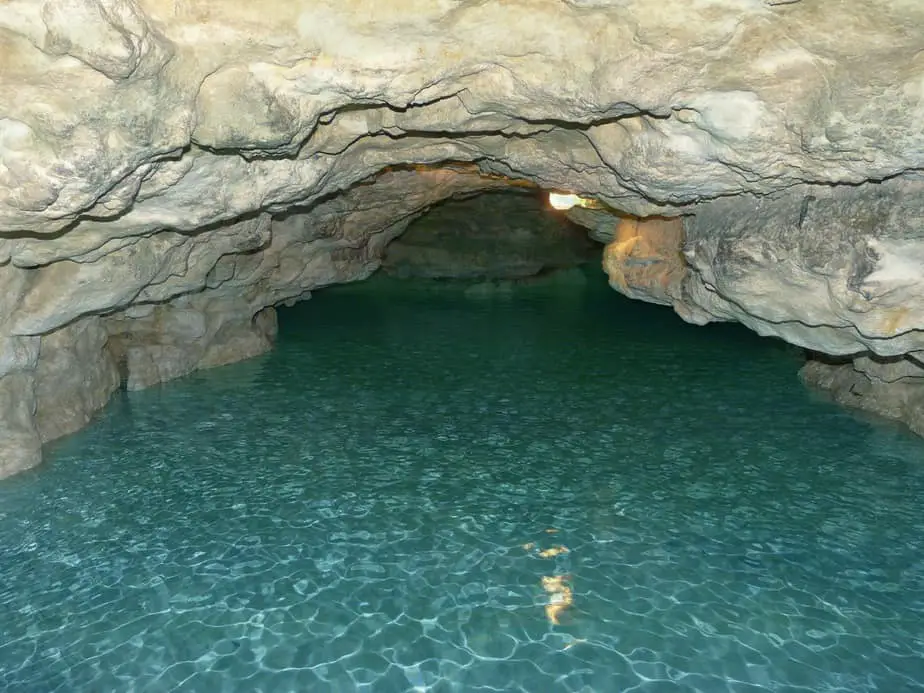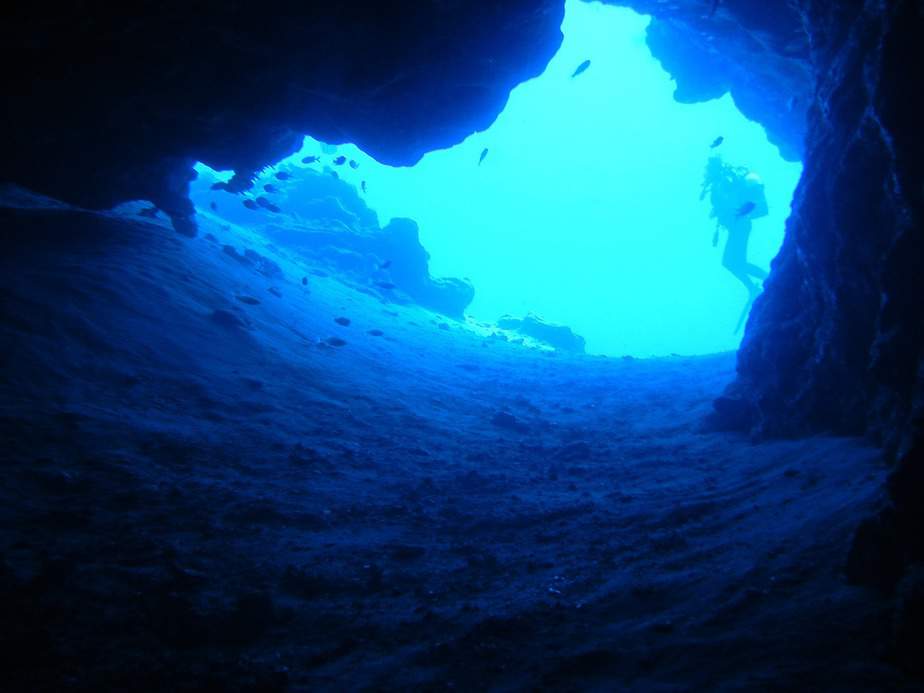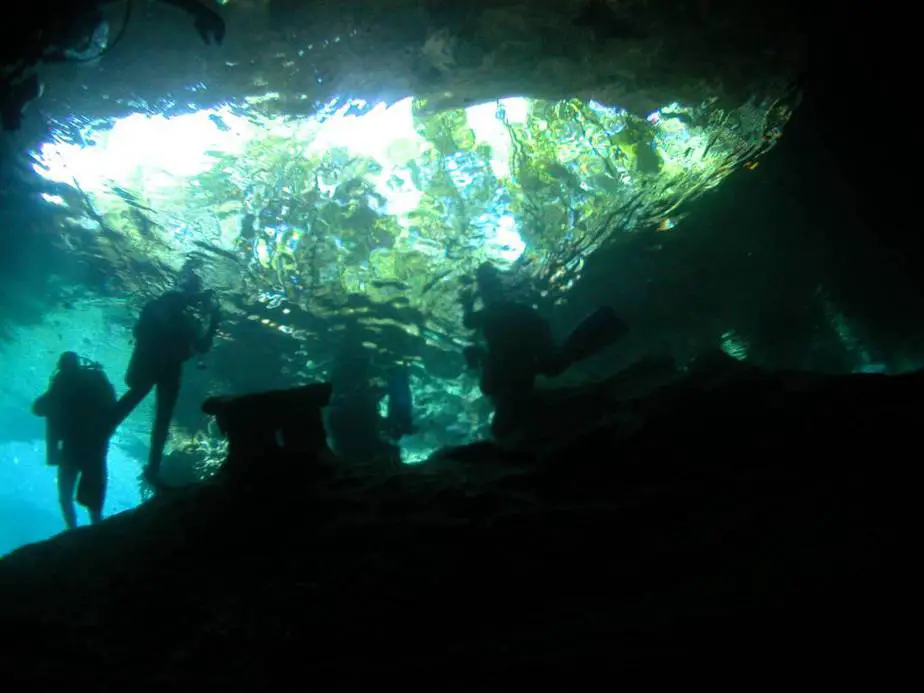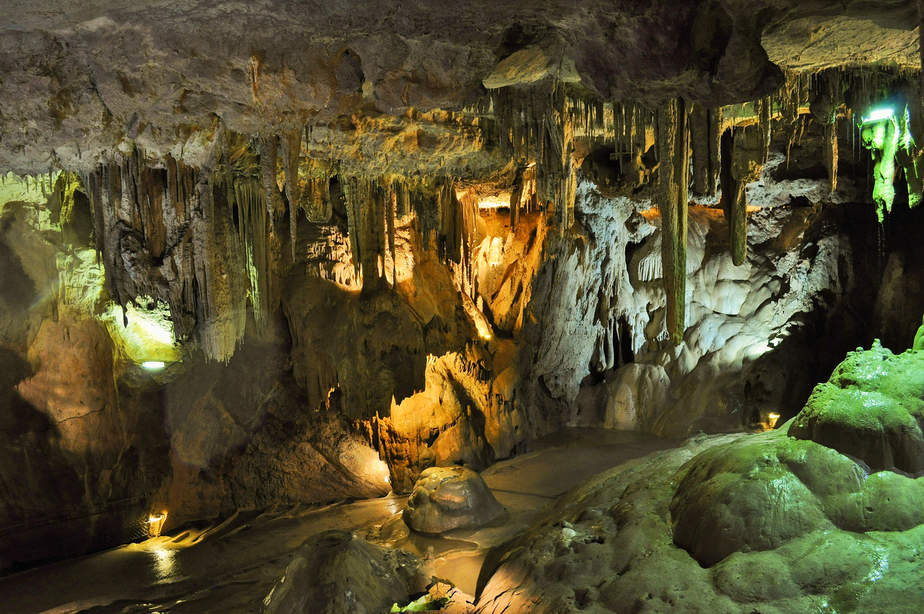Cave, cavern. Tomato, tomato. Or so you’d think. There is a common misconception that cave and cavern are interchangeable words. You may hear someone, in the same sentence, use the words cave and cavern as if they were the same thing. Some people mistake “cave” to be the shortened version of cavern, and in an effort to seem sophisticated, use the word cavern when really they meant to say cave. So what’s the difference between these two words other than two seemingly inconsequential letters? Read on to find out.
Cave vs. cavern
Caves are defined as a cavity or chamber in the earth. Caves can be naturally formed or man-made, with an opening on the side of a hill or mountain. Additionally, some sections of the cavity must be blocked off from direct sunlight. In order for a cave to naturally form, there are a lot of chemical and geological processes, such as pressure, tectonic forces, microorganisms, erosion by water, etc., over hundreds or thousands of years to form a cave. There are numerous classifications for caves.
Caverns are composed of a system of chambers. Caverns are a type of cave, but not all caves are caverns. Caverns are naturally formed hollows when soluble rocks dissolve, and where stalagmites and speleothems can form. When acid is present in groundwater, or there is pressure or volcanic activity, it can form a cavern.
Here’s a table that briefly details some of the major differences between a cave and a cavern.
| Comparison Point | Cave | Cavern |
| Meaning | The cave is a natural or human-made cavity or a chamber on a rock or hillside. | A cavern is a type of cave formed naturally. It is a hollow opening underground. |
| Types | There are many types of caves – primary, sea/littoral, karst, erosional, etc. | Caverns are a type of cave, there are no other types of caverns. |
| Number of Chambers | Caves have a single chamber or an opening. | Caverns have many openings or chambers that are connected by passages. |
| Rock Material | Caves are made up of many materials, including soluble materials/chemicals. | Caverns are made up of soluble materials like limestone, dolomite etc. |
| Occurrence (angle) | Caves are straight, upwards or downwards. | Caverns are very steep towards the ground. |
In the context of scuba diving, cavern diving is perceived as being the “easier’ version of cave diving, and cave diving is seen as this hardcore and risky sport that only the bravest, most adventurous divers dare tackle.

What is a cave?
Caves are a natural or man-made cavity in the ground or hill that has sections that are blocked off from direct sunlight. In order for a cave to be naturally formed, it takes many years of geographical and chemical reactions.
For instance, volcanic activity, weathering of rock, water erosion, and pressure are the primary forces that form a cave. Caves can be active, meaning they have an active flow of water, or relict, meaning they may still have little to no water. Active caves are further categorized into inflow, outflow, and through.
There are many categories of caves:
- Solution or karst caves: They are most commonly occurring caves made mostly of limestone.
- Primary caves: This cave type is formed by surrounding rock such as lava tubes.
- Sea/littoral: Formed along coasts by water action.
- Erosional/Correctional: Formed by rocks and chemicals being eroded.
- Many more.
There are caves all over the world, and has been particularly popular in Italy, Australia, France, and the United Kingdom. There are many popular explored caves in Asia, Europe, and North America.
What is a cavern?
Caverns are a type of cave. They are defined as a large hollow opening underground that is extremely steep towards the ground. Caverns usually consist of many caves or chambers with passages connecting these large open spaces. Many minerals can be found in caverns such as stalagmites and speleothems.
Caverns are naturally formed by pressure, weathering of rock, volcanic activity, and the dissolution of limestones, dolomite, and other soluble ingredients. They can also collapse quickly or many years later, forming a depression.
Main differences between a cave and cavern

Size and position
Comparing their sizes, caverns are larger than caves because caverns consist of a series of caves or cave chambers connected via one passage. Caves tend to consist of only one chamber or hollow.
As for their location, caves are generally above the ground while caverns are located underground. The same can be said of their entrances, though caverns can have multiple entrances.
Shape
Caves are typically vertical, either upward or downwards. Caverns are very steep towards the ground. Caverns can reach so far underground that they reach ground water level.
Material
Both caverns and caves are typically made from soluble rock, typically limestone or dolostone, but caverns may contain additional materials.
One unique characteristic of caverns is that it can form stalagmites and create speleothems. Stalagmites are rock formations that stick out from the cave floor. They are formed by an accumulation of water drippings that contain calcium which mix with stalactite over many years to form stalagmites. Stalagmites are typically cone-shaped but have been observed to occasionally be plate-shaped.
Speleothems are mineral deposits which are made of calcium carbonate. The calcium carbonate is precipitated from water which contains carbonic acid.
Formation
Caves and caverns occur naturally from the weathering of rocks over many years. The rock can be weathered due to a process of pressure, soil erosion, volcanic activity, chemical actions, and microbial activities. Caves that are formed along coasts are the result of water action on the rocks for many years. The water softens and erodes the rock which results in the formation of caves and caverns.
Caves that form along coastal areas are called sea caves or littoral caves. Once hollowed out, sea caves usually get filled with water from the ocean or sea. They can extend deeper underground due to more tidal activity.
Most popular caves and caverns are known as solution caves and caverns. Solution caves are often formed from limestone. They are formed when underground water erodes large limestone rocks beneath the ground. Over time, the limestone rocks dissolve from the water action and eventually a solution cavern is formed.
Caverns are a series of cave chambers connected by a passageway. These chambers can form a variety of patterns, including spongework, anastomotic, branching, network, ramifying, and single-passage to list a few.
Though caves can form naturally, some caves are man-made. Human activities such as oil well drilling, mining, and cutting of stones and rocks can eventually result in a man-made cave.
Other than solution and sea caves, there are also volcanic caves, glacial caves, erosion caves, grottos, and crevices.
Cave diving

Scuba diving has inherent risks associated with it, but it’s still considered a safe sport due to the various safeguards we have in place – from redundancies, to dive buddies, to dive computers, to direct access to the surface – so that scuba diving fatalities can be kept to a minimum. Even a newly certified diver can dive on their own safely as long as they stick close to their dive buddy and dive their plan. Even if something unexpected happens, they can just ascend to the surface.
With cave diving, there isn’t as much leeway for errors. Cave divers do not have the luxury of making an emergency ascent when they are penetrating their way through a cave system. The overhead environment means cave divers must first find their way out of the cave before they can begin their ascent. As a result, any problems will take much longer to fix because the immediate issue is finding the entrance / exit.
Due to the risks involved with cave diving, even one of the largest recreational training agencies, PADI, does not offer full cave diver certifications. This is because often very localized knowledge of a cave and its surroundings is needed in order to penetrate the cave safely, and no two caves are the same. If you want to get your full cave diver certification, you’ll have to take the courses offered by TDI (Technical Diving International).
To sum it up, cave diving is the sport of penetrating an underwater passage past its natural light zone. Cave dives are also cold water dives, so they require a cold water regulator and a 7 mm wetsuit or a drysuit, among other equipment. Cave divers must use a guideline to help them with navigation. Even though cave dives are conducted as a group, cave divers are independent and are responsible for their own safety. For instance, they’ll bring their own redundant gear and do not rely on a buddy for backup gas.
Cavern diving

Cavern diving is diving in a flooded hollow with a difficult-to-reach entrance. Often these entrances open up to a larger cave system beyond them. Cavern diving is restricted to within the light penetration zone, meaning cavern divers stay close enough to the entrance where they can still see natural light. In case anything happens, they are close enough to have direct access to the exit and can surface almost immediately. Some cavern diving courses teach divers to adhere to a maximum distance from the entrance, keeping divers safe.
In comparison to cave diving, cavern diving courses are often used as an introduction to cave diving. A cavern diving course can be used as a taster course to see if you are interested in pursuing cave diving further. In the past, the cavern diving course was the mandatory first course to take out of four courses. Today, one only needs to take an Apprentice Cave Diver course and a Full Cave Diver course to be qualified for cave diving. The cavern diver course is no longer needed, but it can still be used as a primer to cave diving.
Parting words
So what is the difference between a cavern and cave? To answer that, we need to take into account the context in which this question is asked. As you now know, there is a geological distinction between a cave and cavern. However, since this is a scuba diving focused website, the difference between a cavern and a cave dive makes a massive difference in how you plan for it.
We can think of cavern diving as the introduction to cave diving where you are still staying close to the entrance. A full-fledged cave diver will dive far past the natural light zone until the only source of light comes from the diver’s own dive lights. The risk drastically increases due to the limited visibility, and divers also need to worry about not causing a silt-out which worsens the visibility even more.

